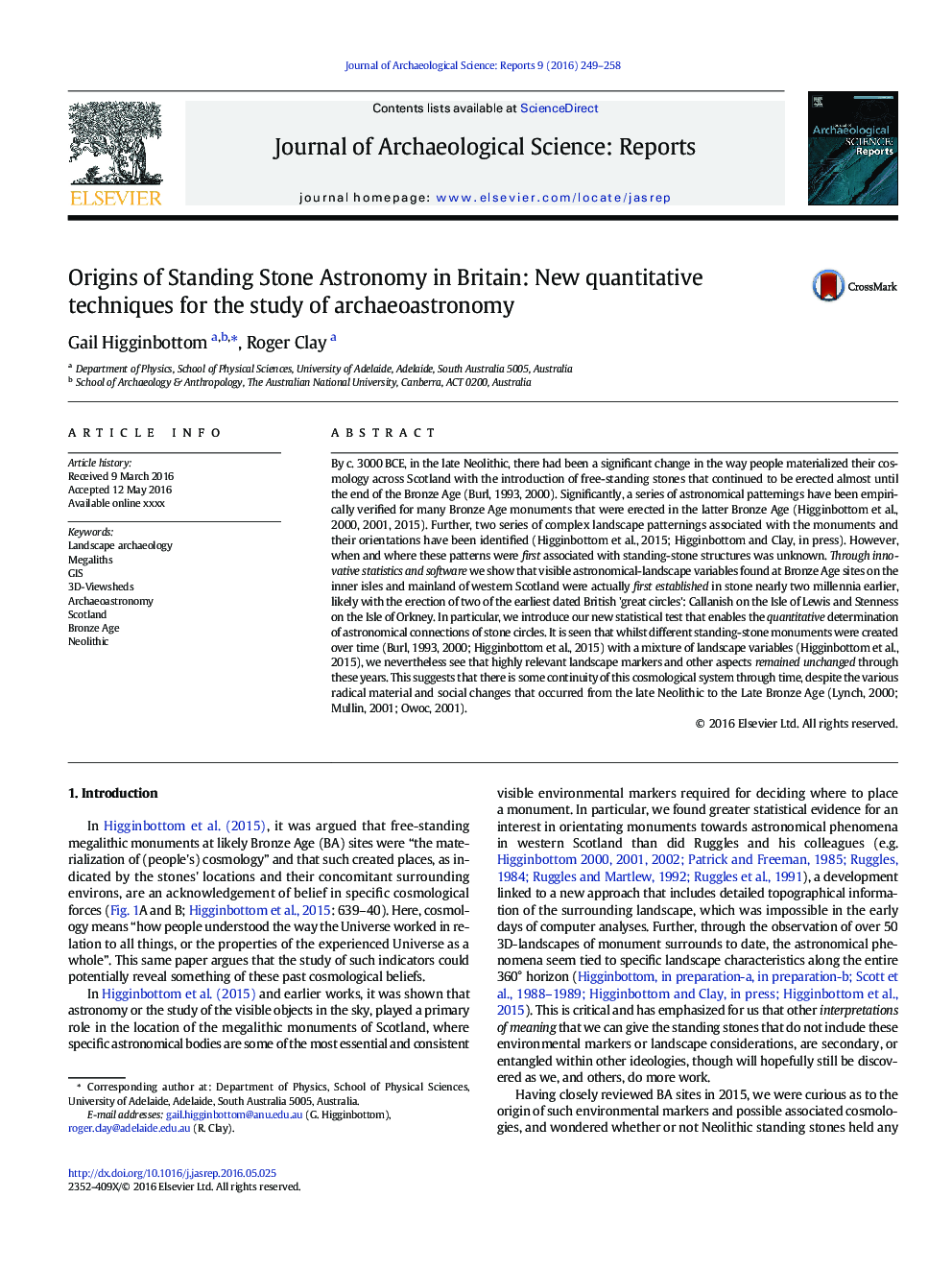| کد مقاله | کد نشریه | سال انتشار | مقاله انگلیسی | نسخه تمام متن |
|---|---|---|---|---|
| 7445401 | 1483934 | 2016 | 10 صفحه PDF | دانلود رایگان |
عنوان انگلیسی مقاله ISI
Origins of Standing Stone Astronomy in Britain: New quantitative techniques for the study of archaeoastronomy
دانلود مقاله + سفارش ترجمه
دانلود مقاله ISI انگلیسی
رایگان برای ایرانیان
کلمات کلیدی
موضوعات مرتبط
علوم انسانی و اجتماعی
علوم انسانی و هنر
تاریخ
پیش نمایش صفحه اول مقاله

چکیده انگلیسی
By c. 3000 BCE, in the late Neolithic, there had been a significant change in the way people materialized their cosmology across Scotland with the introduction of free-standing stones that continued to be erected almost until the end of the Bronze Age (Burl, 1993, 2000). Significantly, a series of astronomical patternings have been empirically verified for many Bronze Age monuments that were erected in the latter Bronze Age (Higginbottom et al., 2000, 2001, 2015). Further, two series of complex landscape patternings associated with the monuments and their orientations have been identified (Higginbottom et al., 2015; Higginbottom and Clay, in press). However, when and where these patterns were first associated with standing-stone structures was unknown. Through innovative statistics and software we show that visible astronomical-landscape variables found at Bronze Age sites on the inner isles and mainland of western Scotland were actually first established in stone nearly two millennia earlier, likely with the erection of two of the earliest dated British 'great circles': Callanish on the Isle of Lewis and Stenness on the Isle of Orkney. In particular, we introduce our new statistical test that enables the quantitative determination of astronomical connections of stone circles. It is seen that whilst different standing-stone monuments were created over time (Burl, 1993, 2000; Higginbottom et al., 2015) with a mixture of landscape variables (Higginbottom et al., 2015), we nevertheless see that highly relevant landscape markers and other aspects remained unchanged through these years. This suggests that there is some continuity of this cosmological system through time, despite the various radical material and social changes that occurred from the late Neolithic to the Late Bronze Age (Lynch, 2000; Mullin, 2001; Owoc, 2001).
ناشر
Database: Elsevier - ScienceDirect (ساینس دایرکت)
Journal: Journal of Archaeological Science: Reports - Volume 9, October 2016, Pages 249-258
Journal: Journal of Archaeological Science: Reports - Volume 9, October 2016, Pages 249-258
نویسندگان
Gail Higginbottom, Roger Clay,